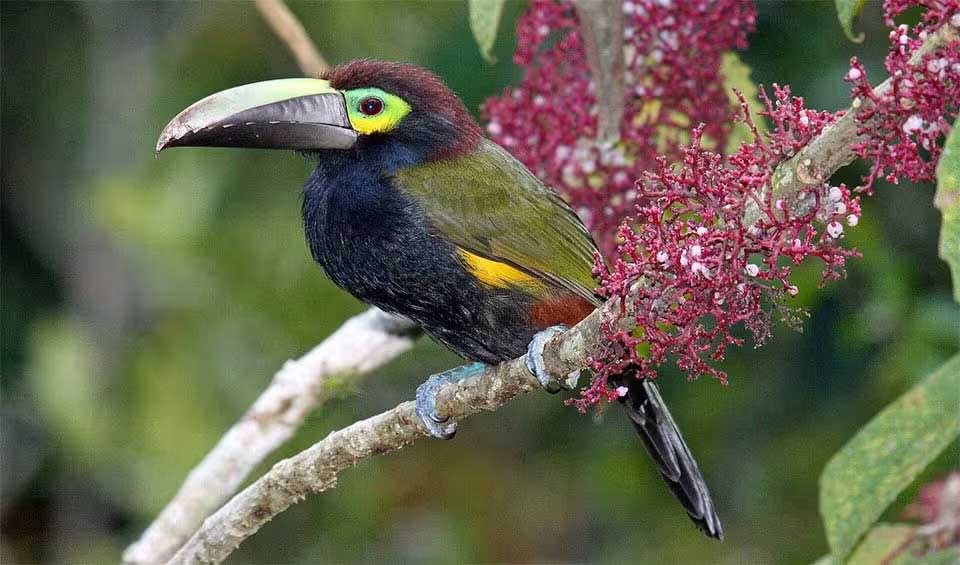Selenidera – Dichromatic toucanets
Some of the most colorful birds in Central America
Selenidera, commonly known as dichromatic toucanets due to their sexually dichromatic features, is a genus of birds that occupy a unique niche in the avian world. These toucanets are primarily found in the lush, verdant rainforests of tropical South America, with their range extending up to 1,500 meters (4,900 feet) in elevation. Remarkably, one species has also made its home in Central America, showcasing the adaptability and range of these colorful birds.
The members of the Selenidera genus share several distinctive characteristics. They typically have green upperparts, which provide excellent camouflage among the forest canopy. The red under-tail coverts are a striking contrast to their predominantly green plumage, making them quite noticeable when they fly. A patch of exposed blue or blue-green skin around the eye is another characteristic feature, which not only adds to their colorful appearance but may also have a role in species recognition or sexual selection.
The sexual dichromatism in Selenidera is particularly interesting. Unlike the majority of toucans, where males and females are similar in coloration, toucanets of this genus exhibit distinct color patterns between the sexes. Males boast a bold black crown, nape, throat, and breast, complemented by an orange or yellow stripe near the ear (auricular stripe). This vivid coloration is not just for aesthetics; it plays a crucial role in courtship displays and territory defense.
Females, on the other hand, present a rich brown coloration, whereas males are black, and the auricular stripe is often reduced or absent. This difference in plumage between males and females is a fascinating aspect of their biology, as it suggests that visual cues are important for mate selection and that the sexes may play different roles or occupy slightly different niches within their habitat.
Species in this genus
Yellow-eared toucanet
One of the smallest toucans that resemble a brightly colored crow rather than a toucan


